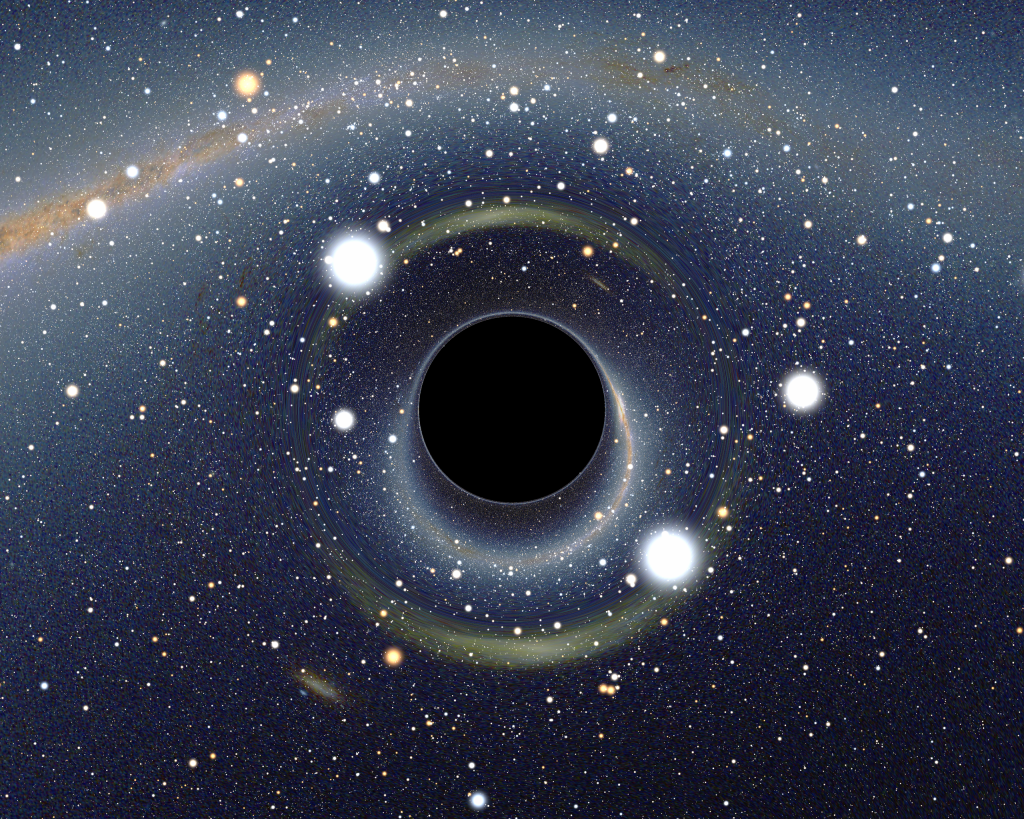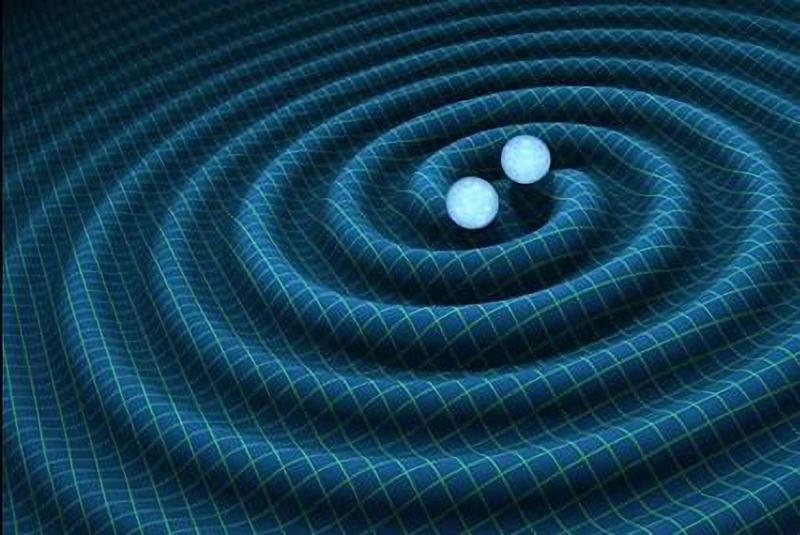“Goodness, Cal, you’ve redone your interior decorations.”
“I got tired of looking at the blank wall opposite the cash register, Sy. Check out the gallery. Way at the end here’s the earliest one I’ve got, goes back to 2005.”
“Yeah, ray-marching each background pixel as it passed through the distorting gravity field. That was heavy-duty computer graphics back then.”

Under the Creative Commons Attribution-Share Alike 2.0 Germany license
“Here’s another one from a year later. I like it better because you can pair up stars and stuff that show up on both sides of the Einstein ring.”

— by R. Alain, Paris Astrophysics Institute
under the Creative Commons Attribution-Share Alike 2.5 Generic license
“This one’s famous, comin’ from the Interstellar movie. Funny, I can’t think of any black hole pictures before Interstellar that paid much attention to the accretion disk.”
“There certainly was a lot of that in the specialist literature, but you’re probably right for what leaked out to the pop‑sci press. Most of the published imagery was about how the gravity field distorts the figures behind it. That perpendicular handle was certainly a surprise.”

Grey disk is the Event Horizon; circle is the Photon Sphere.
Adapted from work by Thorne, James, et al., CalTech and DNEG
“This one’s famous, too. It shows what made the first good evidence that black holes are a thing, back in 1965. That ball to the right is a blue supergiant. See how its solar wind is feeding into X-1’s accretion disk? NASA’s picture is from 2017 so it’s not really historical or anything.”

Credit: NASA, CXC, Melissa Weiss (CXC)
“Now this one is historical, Cal. That image was released in 2019 from data collected in 2017.”
“I knew you’d recognize it, Sy. You’ve written about it enough.”

licensed under the Creative Commons Attribution 4.0 International license
<sly grin> “Whaddya think of this one, Sy, the gravitational waves from those two black holes that LIGO told us about?”
“You knew I wouldn’t like it.”
“It’s just another trampoline picture, right?”
“No, it’s worse than that. Gravitational waves travel at lightspeed. Massive objects like people and 30‑solar‑mass black holes can’t get up to a fraction of a percent of lightspeed without expending an enormous amount of energy. The waves travel outward much faster than objects can orbit each other, even up to the end. Those waves winding outward should be nearly straight.”
“Whoa, Cal, this one isn’t a poster, it’s a monitor screen.”
“I bought a new bigger flat‑screen for home so I brought the old small one here for videos. I like how this movie shows the complicated shape flattening out when you get above the disk. The Interstellar movie made everyone think the disk is some weird double‑handled ring but the handle’s aren’t really there.”
“Mm‑hm, very nice gravity‑lens demonstration. Notice how the ring’s bright in whichever side’s coming toward us whether we’re above or below it?”
Credit: NASA’s Goddard Space Flight Center/Jeremy Schnittman
“No, I hadn’t. Cool. How come?”
“It’s called relativistic Doppler beaming. Time distortion is significant in the close‑in parts of the ring. That affects how we see the flow. In the hole’s frame of reference the brightness and rotation speed are the same all around. In our frame the moving‑closer particles look brighter because they emit more photons per unit of our time. Another one of those unexpected phenomena where physicists say, ‘Of course!’ as soon as they see it but not before.”
~~ Rich Olcott


